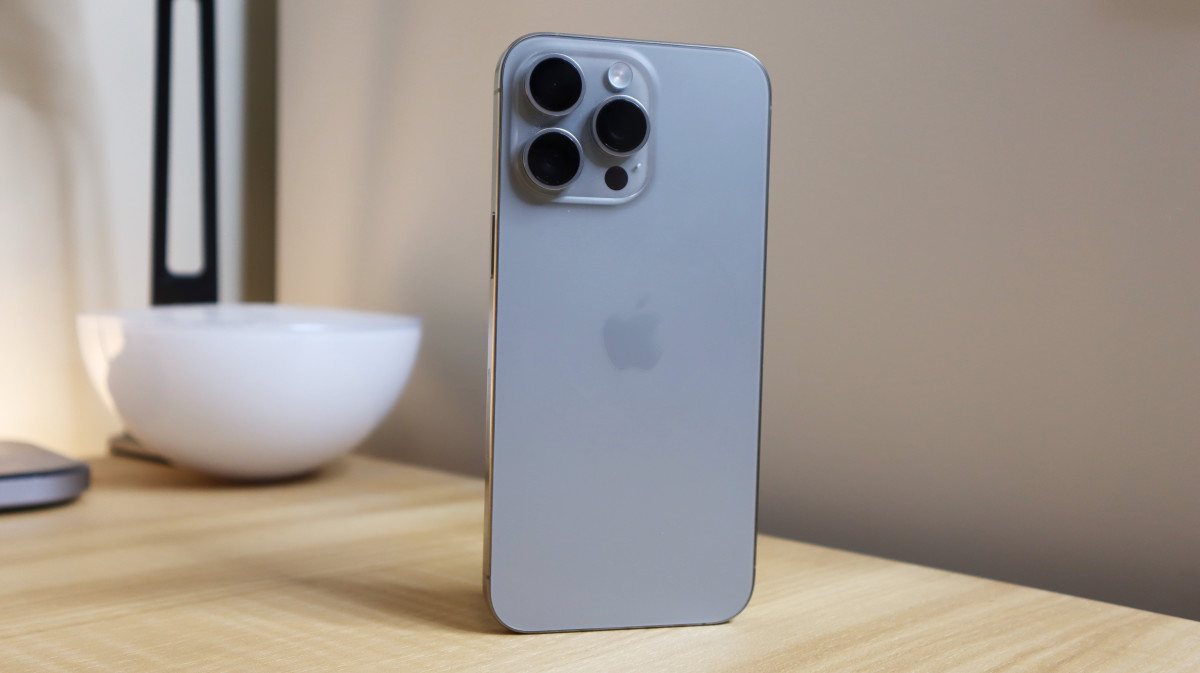
The Arena Media Brands, LLC and respective content providers to this website may receive compensation for some links to products and services on this website.
Apple’s entire iPhone 15 family officially arrives this Friday, Sept. 22, but I’ve spent the last week with two of the most exciting Pro iPhones in recent memory.
The iPhone 15 and 15 Pro Max ditch stainless steel for titanium, improve the cameras, and aim to speed things up further with the first Pro chip in an iPhone.
At $999, the iPhone 15 Pro starts at the same price as the iPhone 14 Pro, but the 15 Pro Max is $100 more at $1,199. However, Apple doubles the starting storage on the 6.7-inch iPhone to 256GB.
Debating whether to go Pro or not? Are you deciding if it’s worth the upgrade over your current iPhone? Read on as I unpacked everything you need to know about the iPhone 15 Pro and iPhone 15 Pro Max.
A lighter, more modern-looking iPhone
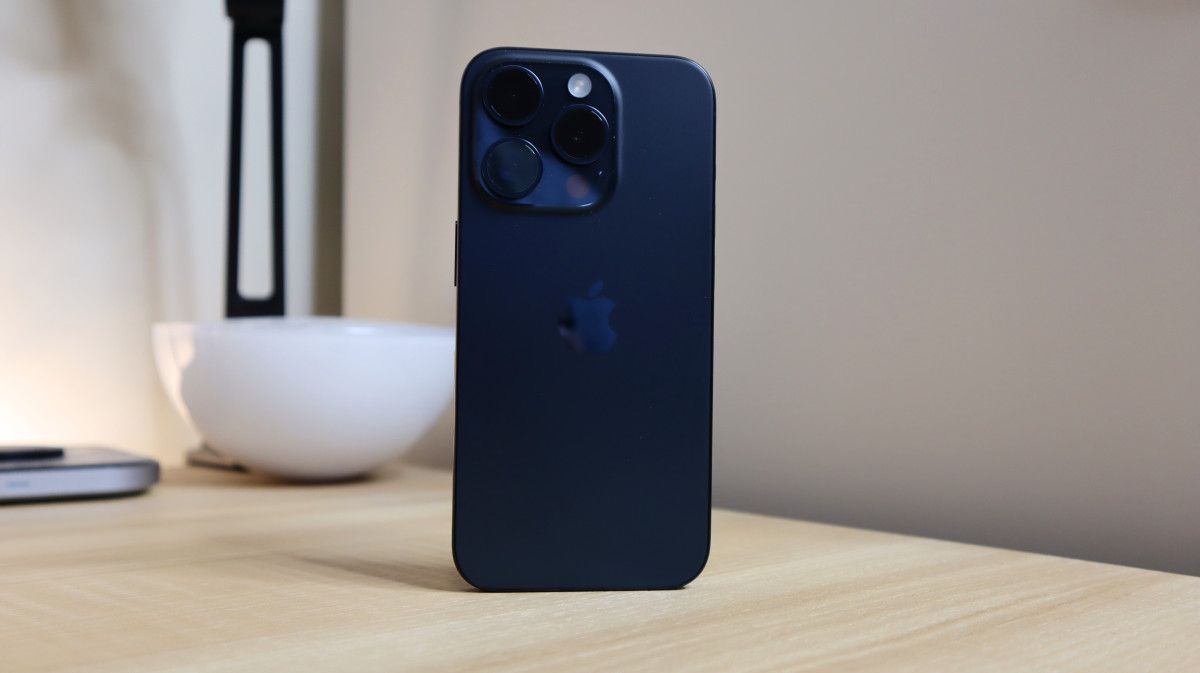
While the names are direct and to the point—Natural Titanium, Blue Titanium, Black Titanium, and White Titanium—the new look for the iPhone 15 Pro and iPhone 15 Pro Max are bound to be conversation starters.
I’ve been testing the iPhone 15 Pro Max in Natural Titanium, my favorite of the four new shades. Depending on how the light hits it, it can be a bit more of a darker beige, or in direct light, it sparkles a bit with some silver undertones. It looks a little raw and is probably the closest to the previous gold iPhones. The Blue Titanium is a bit more polished and strikes as a darker, navy blue that differs from the 13 Pro’s lighter, more airy Sierra Blue.
Regardless of the shade, the rear is a soft and silky frosted matte glass. You also don’t need to worry about fingerprints, which will block them from appearing. The edging around the 15 Pro and 15 Pro Max is where the titanium material comes to light it looks great and, unlike stainless steel, hides most of the fingerprints.
Related: The best iPhone 15 cases for Apple’s newest phone
It’s a terrific material design, and just like the standard 15s, it’s quite comfortable to hold with rounded edges on the back that roll over to the front. The biggest change in the design is the sheer weight of both. The iPhone 15 Pro Max is just 7.82 ounces, while the 15 Pro is 6.60 ounces. As soon as you pick up either, it’s evident that they both shaved off a few ounces.
The 15 Pro and 15 Pro Max feel great in the hand and truly come across as premium smartphones, making the price points easier to understand. They just look gorgeous and keep many of the most noticeable aspects of the iPhone’s design the same—there is still support for MagSafe charging and Qi-enabled wireless charging on the back, the power button lives on the right, and the volume rocker lives on the left.
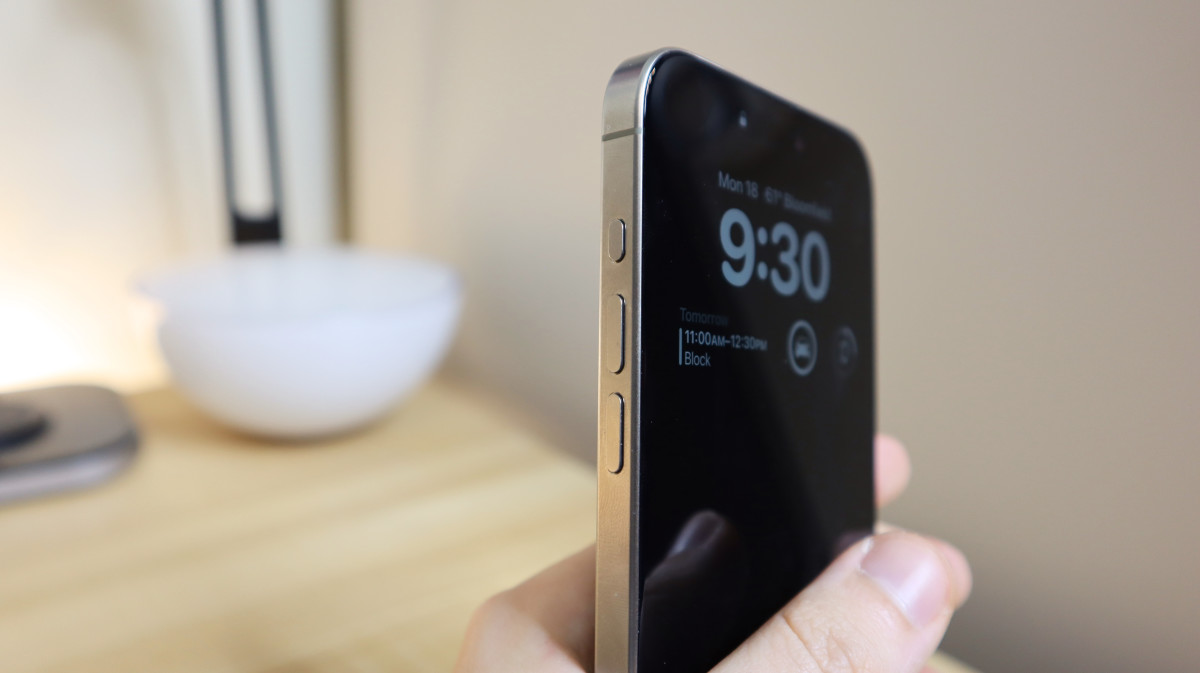
However, the area above the volume rocker is noticeably switch-less. Yes, the iconic mute or unmute switch that’s been on every iPhone since its inception in 2007 is replaced with an Action Button.
Much like the button of the same name on the Apple Watch Ultra, it’s a customizable switch that gives you more control over your iPhone. Within Settings, in one of the nicest designed interfaces Apple has released, you can swipe through several presets for a long press on the Action Button triggers.
It can be switched from silent to volume on, opening the camera app to a specific section, or even starting a custom shortcut you’ve designed. I’ve found myself using it for the Camera preset, especially if I know I’ll be at an event I want to capture, and I have found myself using it to start a longer action with Shortcuts.
The Action Button is a nice addition, but right now, it is limited to just one selection. I want Apple to push it further with the ability to customize a double or triple press, and I am hopeful that could arrive in a future software update. But for now, it stretches further than Samsung’s older Bixby-only button and gives you the power to choose what you’d like the button to do out of the box without much hassle.
Still excellent displays
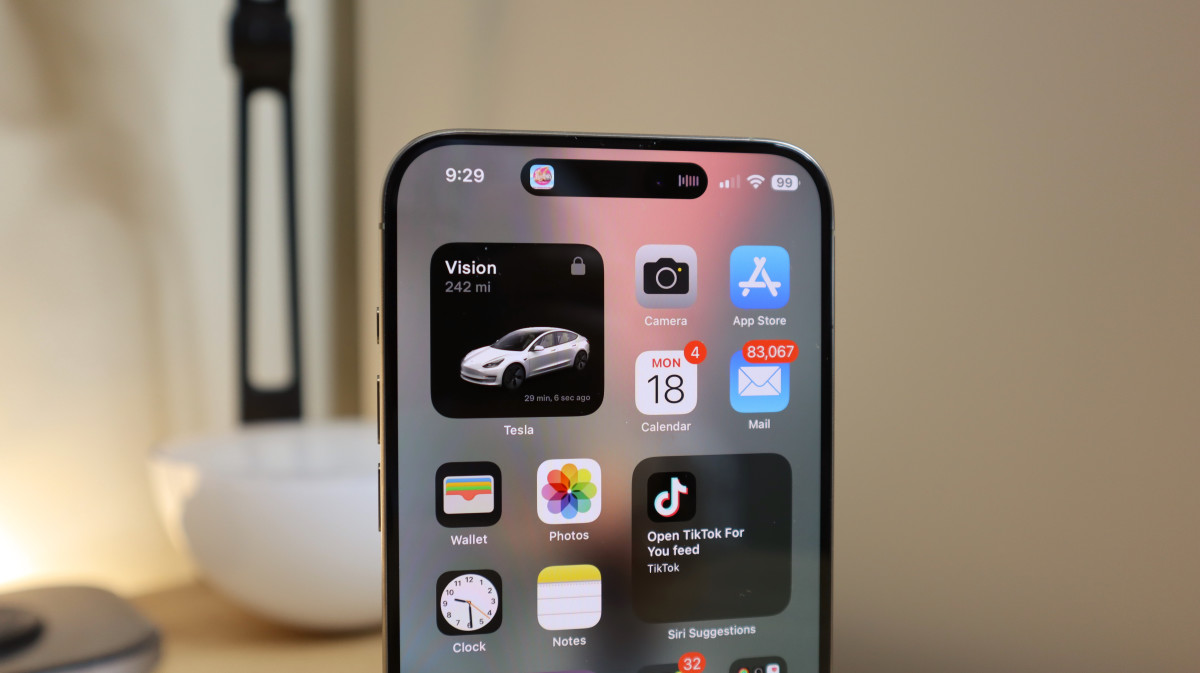
As with the 14 Pro and 14 Pro Max, the iPhone 15 Pro and 15 Pro Max offer Apple's best displays in a smartphone. Respectively, the 6.1-inch or 6.7-inch screen is an OLED Liquid Retina display with a peak brightness of 3,000 nits that dynamically adjusts the refresh rate depending on how you’re using it. If you’re scrolling through a web page, the result is natural, and you won’t be left shaking your fist in anger while gaming, as the iPhone can match the screen refresh to the game's speed.
The 15 Pro and 15 Pro Max displays feel instantaneous and are great for viewing content in any condition. While under bright lights in the Mercedez Benz Stadium for a match between Inter Miami and Atlanta United, the 15 Pro Max intelligently raised the brightness so that I could make out content. The same goes for flying in the window seat with the bright sun shining.
Apple also slimmed down the bezels even more, and these displays really do go right to the edge. The 6.7-inch on the 15 Pro Max, in particular, feels a lot larger than the 14 Pro Max. There weren’t many distractions, if any, on the edges, but this display stretching ensures the focus is on whatever is displayed.
Related: Apple’s new Adaptive Audio for AirPods Pro is a game-changer for travel
You also get the Dynamic Island on both of these, which acts as a screen within a screen that can save you from constantly switching between applications. For instance, you can control the music playback from the top while in another application and even see when your Uber or Lyft will arrive. Developers, as well as Apple-made apps, have made great use of the Dynamic Island thus far. Nearly a year after it launched on the 14 Pros, countless more apps make great experiences to take advantage of. Plus, with it arriving on the standard 15s, you can bet more applications will be adding support.
Both screens are also great viewfinders, for what is the biggest difference over the previous Pros.
A major upgrade in the camera department
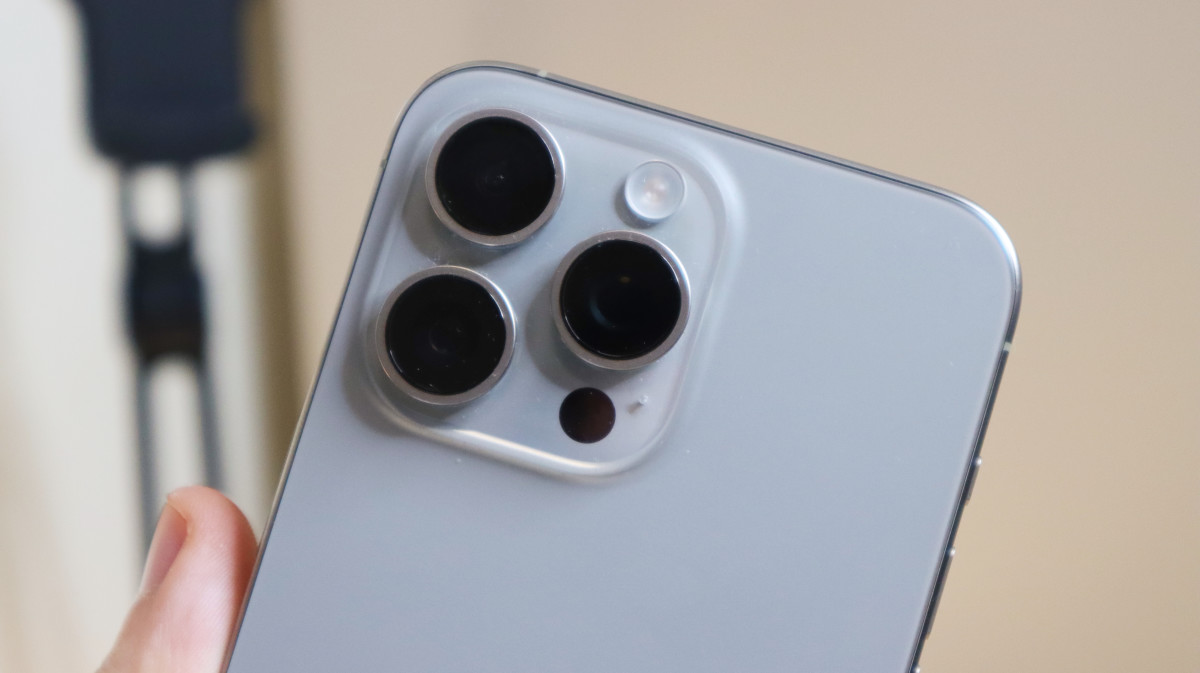
While the iPhone 15 Pro and iPhone Pro Max feature a main triple-camera array on the rear, it pays to go bigger this year. Like we’ve seen in the past from Apple, they’re putting the best camera features on the biggest iPhone.
The iPhone 15 Pro and iPhone 15 Pro Max start with a main 48-megapixel lens similar to what debuted on the 14 Pros. It has a new coating that helps with glare from the sun, but the bigger difference is three focal lengths to switch between on the fly. And yes, this is from the single main camera lens. You can now shoot at 24mm, 28mm, or 35mm, giving you more control over the result. Pros will appreciate that you can customize which opens by default in settings.
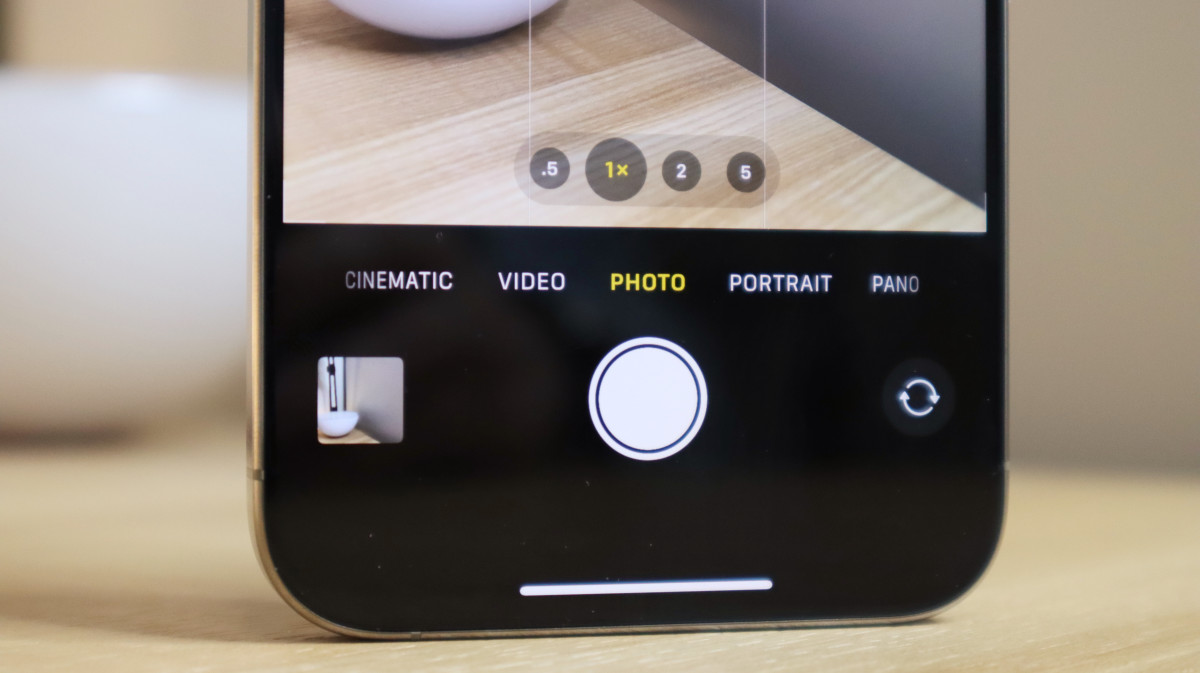
For instance, when shooting people—potentially portraits—you have three more ways to frame a shot at tighter focal lengths. It also works great for capturing fauna and other wildlife and live events. The difference between the focal lengths seems small on paper but can make a big difference for framing the shot.
Aside from the improved main sensor, you can crop into 2x for an even tighter shot and opt for the Macro mode for super closeups. Both 15 Pros feature a 12-megapixel ultrawide lens with a new anti-glare coating.
Things get different when it comes to the telephoto and the optical zoom capabilities. While Samsung and Google have offered upwards of 10x optically and even as fat as 100z with special processing, Apple has, up until this year, topped off at 3x zoom.
The iPhone 15 Pro sticks with a 12-megapixel telephoto that affords up to 3x optical zoom, but the 15 Pro Max quite literally zooms past it with 5x optical and up to 25x from a custom “tetraprisim” telephoto lens. While 5x is certainly larger than 3x, at first glance, I was a bit surprised that it wasn’t larger, but in true Apple form, when they offer a new feature, they don’t do it at 50%.
The 5x zoom lets you capture a crazy amount of detail that retains accurate colors. Just look at some of the shots captured below, specifically of an MLS game from the opposite side of the pitch or the NYC skyline above a set of lovely trees on a sunny day from NJ. Apple’s tetraprism gives the image enough to reflect and retain light before hitting the sensor, resulting in a captivating end result.
As far as 25x zoom goes, it’s a bit more passable than Samsung’s Space Zoom, but it is still not a perfect image. For instance, when zooming in at the full 25x digitally, you introduce grain, and just like Samsung or Google, Apple presents the super zoom with an additional viewfinder in the top corner.
Simply put, 5x makes a big difference and sits well alongside the ultra-wide, three varying focal lengths for 1x, 2x, and the macro mode. The 15 Pro Max is the most versatile iPhone yet for photography and videography.
In 2023, if you want the best iPhone camera, you’ll need to go with the Pro Max, and I think for most folks considering a Pro, if you can handle a larger phone, you won’t be disappointed. Still, though, both of these sports have some improved image processing. The updated pipeline—the Photonic Engine—has been improved further for faster processing times and better performance in lower lighting conditions.
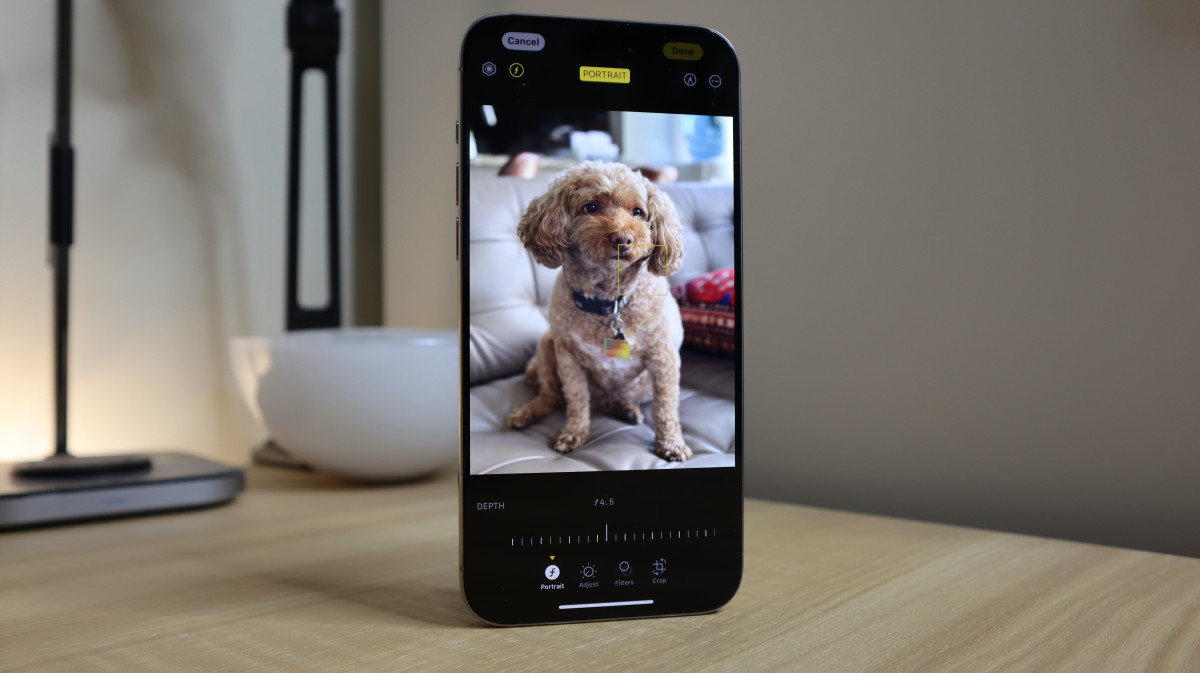
Like the iPhone 15 and 15 Plus, Apple’s delivering a game-changing update to Portrait mode. You no longer need to be in that dedicated capture mode as if the iPhone detects a person, cat, or dog; it will automatically capture a depth map and let you add the bokeh Portrait effect after the fact. It’s one of those classic iPhone features that aim to make the capture process as seamless as possible, but it goes farther for users who want more control as, after the fact, you can customize the shot through the built-in editing suite.
Overall, the iPhone 15 Pro and 15 Pro Max have one of the best smartphone camera systems I’ve tested. Yes, it makes capturing easy and simple, but the images you can get are packed with details and pops of color that can instantly level up your game. See below for a gallery of images captured on the 15 Pros.
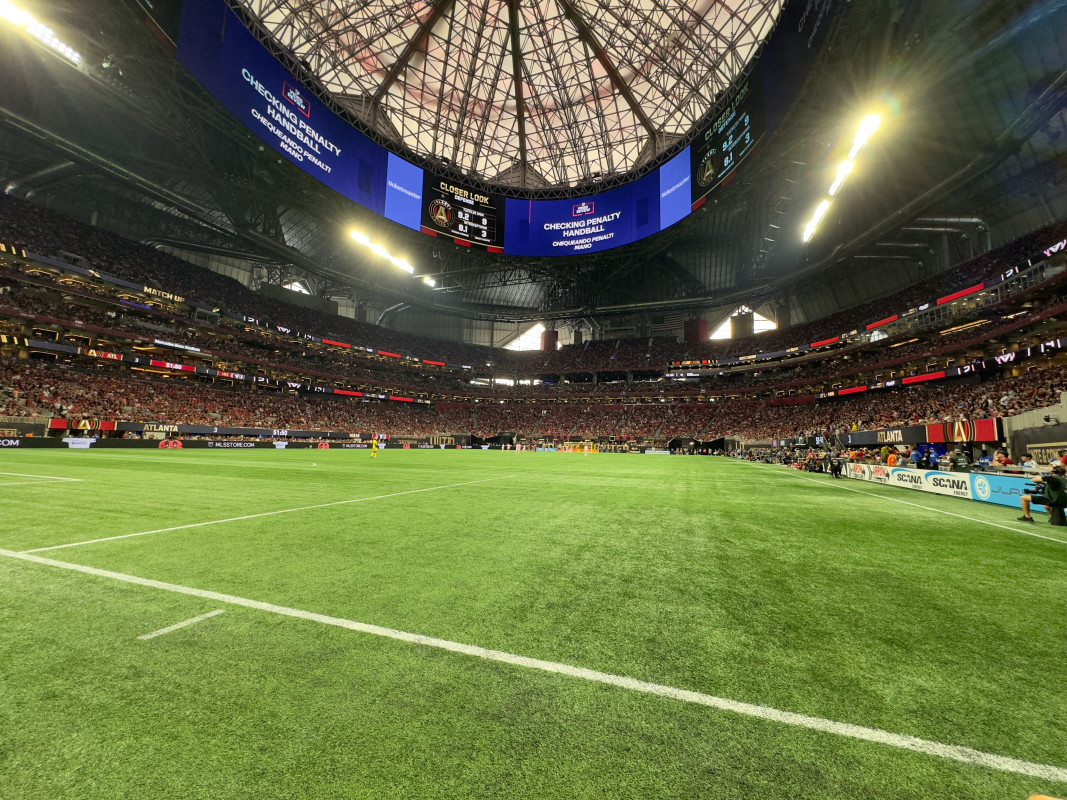
A photo captured on the ultrawide iPhone 15 Pro Max camera.
Plenty of speed

Powering the entire iPhone 15 Pro and iPhone 15 Pro Max is Apple’s first mobile chip with the word Pro in it. The A17 Pro blows past the A16 Bionic with up to 10% better CPU performance and up to 20% faster GPU performance. It all comes together for one of the fastest iPhones I’ve tested, especially in the world of exports and load times.
That being said, for more everyday tasks like browsing the web, creating the next big TikTok or Reels, FaceTiming while playing a game, and other tasks move right along without any ease. Similar to the A16 Bionic in the iPhone 15 and 15 Plus, the 15 Pro and 15 Pro Max aren’t a giant leap in performance year over year, but those coming from older iPhone models will certainly notice a speed improvement.
One area of improved speeds is with image processing, specifically for Pro RAW shots, which usually take a few seconds and are closer to under one now. I also got to play an early version of Resident Evil Village, which performed quite well on an iPhone. It shows much promise that more true console, AAA-level titles could arrive on the iPhone. This title and Resident Evil 4, Death Stranding, and Assassin’s Creed Mirage will arrive in the next few months. In the meantime, plenty of Apple Arcade titles and other games available in the App Store run swimmingly here.
In terms of overall performance, the iPhone 15 Pro and iPhone 15 Pro Max pack a punch and stand out as top-performing smartphones that can go toe-to-toe with the Galaxy Z Fold 5, S23 Ultra, and Pixels 7 Pro. It will likely beat them out with benchmark scores, considering that stuff glides here, be it a 4K video export or multitasking between a couple dozen apps.
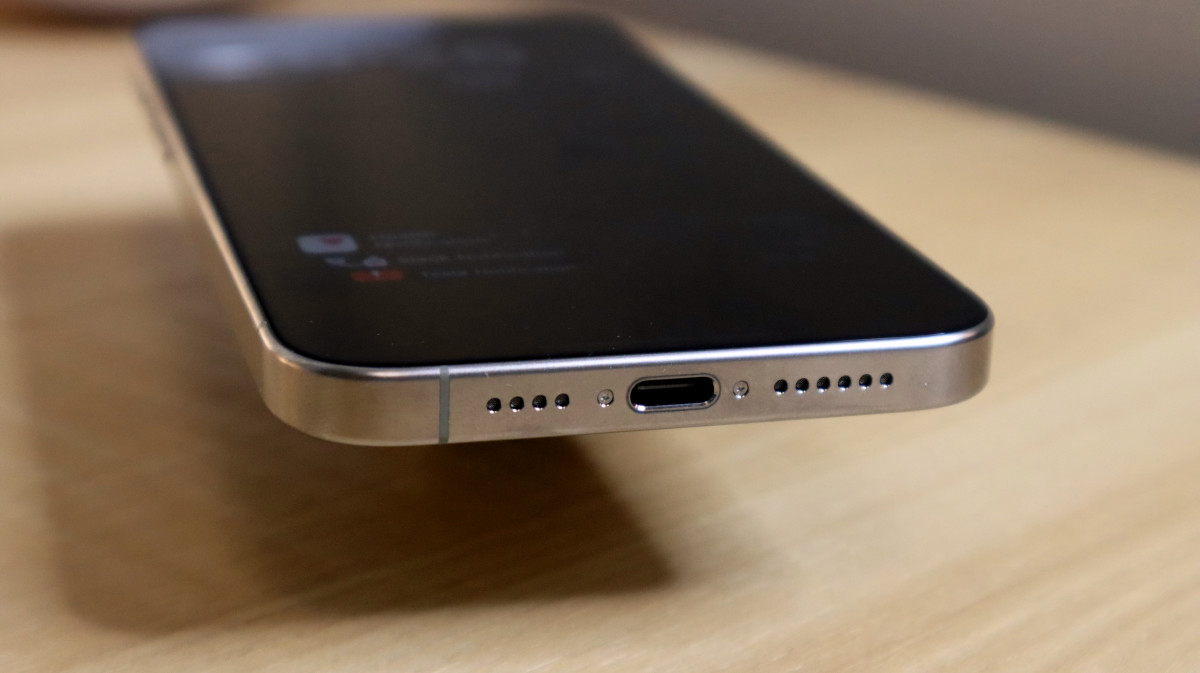
Lastly, Apple swapped the port on the entire iPhone 15 family with the Pros included. Gone is Lightning, and it is in a USB-C. It looks similar on the device itself, and it should be a good change as Apple is adopting a universal standard. A braided USB-C to USB-C cable is included in the box, making the port swap easier to adopt.
Still, the iPhone 15 Pro and iPhone 15 Pro Max can be charged wirelessly through a standard Qi-enabled pad or a MagSafe charger. The latter will align perfectly to the back of either phone and enables faster wireless charging at up to 7.5 watts.
Unlike the standard iPhone 15s, the 15 Pro and 15 Pro Max also get improved data transfers that blow past Lightning. These phones can even be plugged into a computer like a Mac to instantly transfer a photo right after it’s captured.
Related: Here's how Apple iPhone trade-ins work to get the most value
Bottom line: Are Apple’s iPhone 15 Pro and 15 Pro Max worth it?
While the iPhone 14 Pro and 14 Pro Max delivered a better main camera and the Dynamic Island, the 15 Pros feel more packed with features. You get camera updates across the board, a terrific Portrait mode enhancement, more speed with plenty of GPU performance, and a modern design from Titanium. It’s a pretty substantial leap over last years, and if you’re coming from an older iPhone—Pro or not—you’ll score those major performance leaps that make for a better experience each day.
True to the iPhone, you will also get at least several years out of the 15 Pro or 15 Pro Max. Just look at the list of supported models for iOS 17, and you’ll see that it dates back to the iPhone XR. Google and Samsung are improving at promised updates, but Apple has a stronger track record.
Similar to the iPhone 14, 13, and 12, strong carrier promotions are geared toward getting folks to jump. Verizon and AT&T will give you up to $1,000 off with an eligible trade-in, bringing the cost much lower for the 15 Pro and 15 Pro Max. I’d just push you to go with the larger one as it won’t weigh you down, and 5x makes a difference.
Prices are accurate and items in stock at time of publishing.







